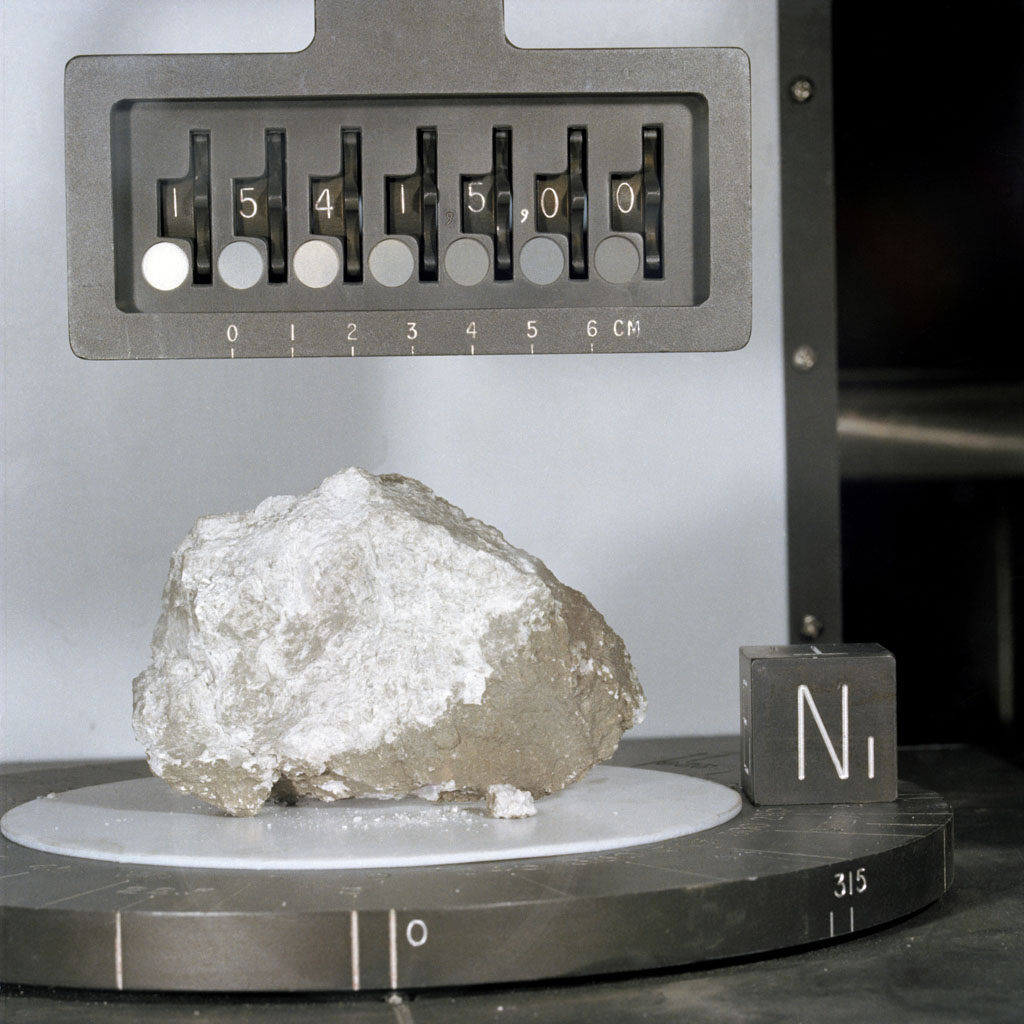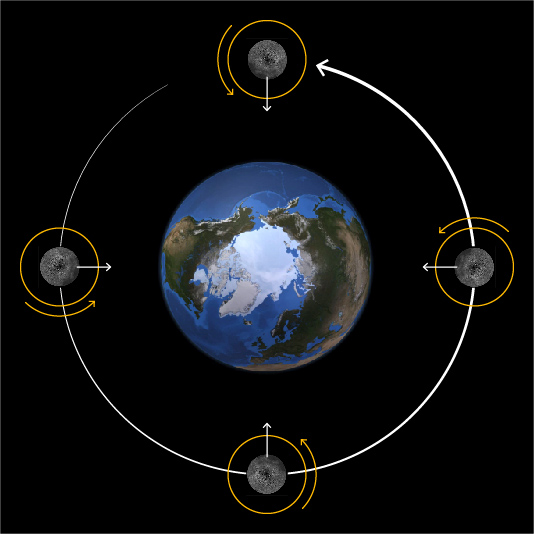Lunar Science Q&A

When did humans first visit the Moon?
On July 20th 1969, astronauts Neil Armstrong and Buzz Aldrin of Apollo 11, became the first humans to set foot on the Moon. Armstrong and Aldrin explored the lunar surface for four hours while astronaut Michael Collins orbited the Moon in the command module. The Lunar Reconnaissance Orbiter (LRO) has imaged the Apollo 11 landing site.
Image Credit: NASA

What is the oldest rock found on the Moon?
During the Apollo missions to the Moon (1969-1972), astronauts collected 2,414 samples of Moon rocks, weighing 383 kilograms (842 pounds). One of these rocks, collected in 1971 during Apollo 15, was named the Genesis Rock. It is one of the oldest known pieces of lunar crust, having formed as the Moon cooled and solidified over 4 billion years ago.
Image Credit: NASA/Johnson Space Center

How did the Moon form?
Today, there are several main theories on the origin of the Moon. The most widely accepted of these theories states that the Moon formed after a Mars-sized protoplanet (a young planet not yet fully formed), collided with the early Earth over 4 billion years ago. This massive collision produced debris that eventually coalesced due to gravitational forces to form the Moon.
Image Credit: NASA/SSERVI

What types of minerals and rocks are found on the Moon?
The crust of the Moon is made up of two main types of rock, anorthosite and basalt. Anorthosite is light in color because it is made up of a light-colored mineral called plagioclase feldspar. Basalt is dark in color because it contains the iron-bearing minerals pyroxene, olivine and ilmenite, along with volcanic glass. The iron present in these minerals tend to absorb light, making them appear dark. The light and dark areas on the Moon are predominantly composed of these rock types.
Image credit: USGS

Does the Moon have an atmosphere?
Unlike Earth, the Moon does not have an atmosphere. Temperatures on the Moon’s surface fluctuate dramatically from blistering heat during the day (100° C) to frigid cold during the night (-173° C). With no atmosphere, there is also no wind. Footprints of the Apollo astronauts and those of future explorers may last for thousands of years!
Image credit: NASA

How are craters formed on the Moon?
Impact craters are some of the most dramatic features that can be seen on the Moon. These craters form when meteorites, asteroids, and comets strike the lunar surface at speeds of 10-20 kilometers per second. Craters record the Moon’s 4.5 billion year history. Cameras aboard the LRO allow scientists to study lunar craters and determine important physical details of their formation.
Image credit: NASA

What is the largest impact feature on the Moon?
the Moon's massive impact basin, South Pole-Aitken Basin at 2,500 km (1,553 miles) in diameter, ranks as one of the largest impact feature in our solar system. It possesses both the highest elevation (8 kilometers) and lowest elevation (-6 kilometers) on the Moon. Instruments aboard the LRO give scientists the chance to study this feature in greater detail.
Image credit: Lunar and Planetary Institute

Why is only one side of the Moon visible to the Earth?
The same side of the Moon always faces the Earth because the Moon spins once on its axis in exactly the same amount of time that the Moon revolves around the Earth, or once every 29 days. the Moon and Earth have been tidally locked in this configuration for millions of years.
Image credit: NASA/GSFC/USGS

Does the Moon have volcanoes?
There are many volcanic features on the lunar surface. In fact, the dark lunar maria that you can see when there is a full Moon are massive, generally level deposits of basalt, a volcanic rock. The lunar maria cover about 17% of the Moon's surface. However, Earth-like volcanoes can also be found on the Moon. LRO has discovered that the Gruithuisen Domes (shown by the black arrows in this Apollo 15 picture) are unusual silica-rich volcanoes.
Image credit: NASA